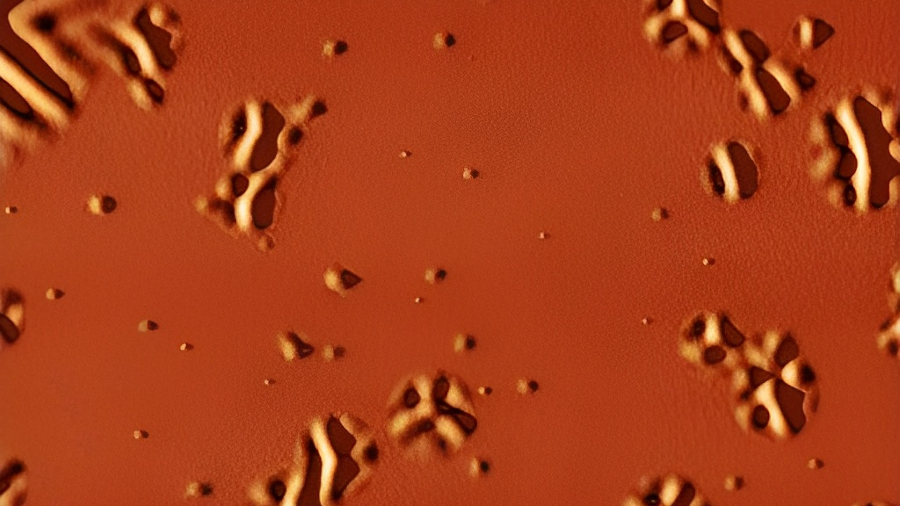Researchers from the UAB and the ICN2 have developed a methodology that makes it possible for the first time to observe under the microscope, in real time, what happens when glass is heated and changes to a supercooled liquid phase, known as the "glass transition". The research, published in Nature Physics, is of great importance for the cryopreservation of proteins, cells and living tissues, for the manufacture of drugs and electronic devices, and for tissue engineering, where this glass-to-liquid transition plays a key role.

Glass is a solid material with such a disordered structure that it could be considered a liquid of extraordinarily high viscosity. It is found in transparent and stained glass windows, in television screens and mobile devices, in fibre optics, in industrial plastic materials, and also in the state of proteins, cellular structures and living tissues when frozen for cryopreservation.
Despite being so common, it is very difficult to develop theories and models that can explain their behaviour in detail. The mechanisms by which a liquid cools and transforms into a glass, and conversely, how a glass transforms into a liquid when heated, something known as "glass transition", are still not fully understood. Physicists are still not sure whether this is a phase transition and glass can be considered as a thermodynamic state distinct from the liquid and solid states; or whether glass is simply a supercooled liquid - cooled below freezing temperature but retaining liquid properties - whose atoms or molecules have very little mobility. One of the major difficulties in understanding this process lies in the challenges of visualising it through the microscope with sufficient resolution, as the structures of the supercooled liquid and glass are virtually indistinguishable.
A team led by researchers from the Department of Physics of the Universitat Autònoma de Barcelona (UAB) and the Catalan Institute of Nanoscience and Nanotechnology (ICN2), with the involvement of the UPC and the IMB-CNM-CSIC, has presented a new methodology that makes it possible to observe directly under the microscope what happens in a glass when it is heated above the glass transition temperature, known as the "relaxation" process that transforms it into a liquid. Researchers worked with ultra-stable organic glass, which is prepared via thermal evaporation. They are denser and exhibit higher kinetic and thermodynamic stability than conventional glass obtained directly from liquids. Unlike conventional glass which, as seen so far, transforms to the liquid state globally, without clear distinctions between different regions of the material, this ultra-stable glass transitions to a supercooled liquid state in a similar way as crystalline solids do when they transition to the liquid state, with the formation of liquid-phase areas that grow progressively larger. This is a process that was already described indirectly by nanocalorimetry measurements and was observed only in computational models. "Previously it had already been inferred from these models that the liquid-phase areas that are produced have an extraordinary separation between them when it comes to ultra-stable glass, but this had never been observed directly," says Cristian Rodriguez Tinoco, researcher at the UAB and ICN2.
The new method developed to observe this transition consists of sandwiching the ultra-stable glass between two layers of glass with a higher transition temperature. When the ultrastable glass layer is heated above its transition temperature, the instabilities that occur on the surface are transferred to the outer layers of the sandwich and can be observed directly with an atomic force microscope. "These are very small movements and compressions, of the order of a few nanometres when the transformation begins, but large enough to be measured precisely with a microscope of this type, which monitors in situ the surface deformations that appear above the transition temperature," explains PhD student Marta Ruiz Ruiz.
The work allows the devitrification of the glass to be followed in real time. It allows quantifying the dynamics of the relaxation process in ultra-stable crystals towards a supercooled liquid by directly measuring the distances between the liquid domains that appear, while observing the deformation of the surface and its evolution over time. In this way, it was possible to confirm how these distances between liquid areas are extraordinarily large in this type of glass, and the correlation of these distances with the time scales of the material, as predicted by computational models. "The microscopic description we have achieved has made possible for the first time a direct comparison between computational models and physical reality. We believe that this technique will also be very useful in exploring the glass transition on smaller time and space scales, which will allow a better understanding of the transition in less stable glass produced from cooled liquids," concludes Javier Rodríguez Viejo, researcher at the UAB and ICN2.
The work, published today in Nature Physics, was led by professors Javier Rodríguez Viejo and Cristian Rodríguez Tinoco, researchers from the Thermal Properties of Nanoscale Materials group (GTNaM) of the Department of Physics at the Universitat Autònoma de Barcelona and the Catalan Institute of Nanoscience and Nanotechnology (ICN2), located on the UAB campus, with the involvement of researchers Marta Ruiz Ruiz (first author of the article), Ana Vila Costa and Marta González Silveira also from the UAB and ICN2; as well as ICN2 researchers Tapas Bar and Jordi Fraxedas; Jose Antonio Plaza, researcher at the Institute of Microelectronics of Barcelona (IMB-CNM-CSIC), at the UAB campus; and Jorge Alcalá from the ETSEIB of the Polytechnic University of Catalonia (UPC).






